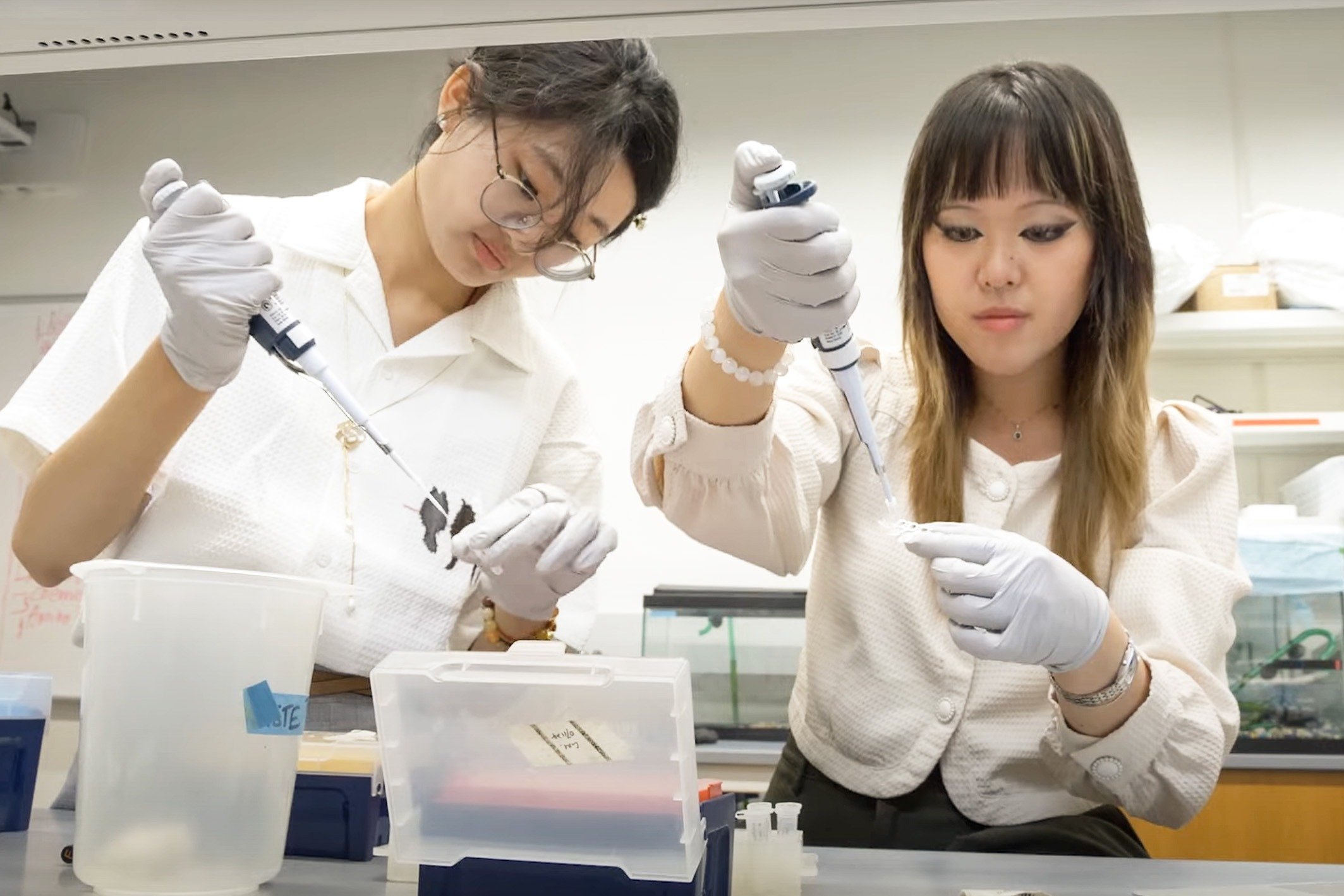Marie Wei, a senior studying molecular and cellular biology and classics at the Krieger School, had unique pets growing up – snails. Today, she hopes to reduce snail cruelty and reimagine snail mucus-based drugs and products with her teammate, Cecelia Zhang, a biomedical engineering senior at the Whiting School, by creating synthetic snail mucus.
In ancient Greece, snail mucus was used to treat wounds. Today, it’s a popular moisturizing skincare product, and medical research shows it can create a strong adhesive, repair tissue, treat inflammation, and slow the growth of tumors.
Wei and Zhang believe its effects are due to its key protein, which has been coined epiphragmin. Their project, “AminoArtisans,” focuses on reproducing this protein as a first step in making artificial snail mucus and received a $2500 grant from the Whiting School’s Student Initiatives Fund in 2024.
“Because we are engineering protein, which is metaphorically a way to craft protein into whatever you want, we call ourselves artisans,” Wei says. “And we choose ‘amino’ because it’s referring to amino acids, which are the building blocks for protein and life.”
Although snail mucus is known for its benefits, there isn’t much research that explains why it works, according to Wei.
“Researchers have been putting raw mucus into cancer cells and seeing them metastasize slower,” Wei says, “But they’ve never actually understood what’s happening on a molecular level and what’s allowing these outcomes to happen.”
“When we understand how snail mucus works on a molecular level, we can engineer it to be a stronger drug or a more useful substance,” she adds. “By producing mucus inside a lab, we also can reduce the need for snail farms and make that industry more efficient, lucrative, and cruelty-free.”
To force snails to secrete slime, traditionally, they were dunked in pots of water with salt and vinegar or manually cracked open, harming or killing the snail. Over time, snail farmers have developed other extraction methods, like Muller machines which spray snails with an acidic solution promoting mucus production or having snails crawl on a mesh in a dark, quiet room, leaving mucus in their trails.
A Muller machine can process up to 4,000 snails in an hour producing three gallons of mucus. If a farm processes a new batch of snails each hour, they can make up to 24 gallons in one eight-hour day. After one mucus extraction session, the snails return to their farm for at least one month to eat, become stronger, and be able to produce mucus again.
“If we can directly make snail mucus, and we can streamline this protocol, then maybe it only takes three hours to get the same yield as the current protocols,” Zhang says.

